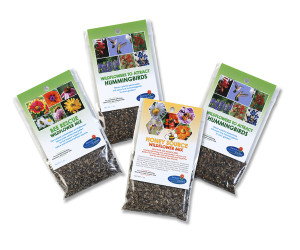EZ Indoor Seed Starting
EZ Indoor Seed Starting Setup
Gardening Tips
Indoor Seed starting is really easy and cheap. You get so many more plants by starting your own seeds. My mantra in my seed starting classes is “Seeds Wanna Grow.” You just have to give them a little help to mimic outdoor conditions.
All seed-starting setups are pretty simple, once you know the basics. I just finished designing a new setup for myself this year because BBB Seed Head Honcho Mike added so many new varieties of seeds this year, that I need more space to try them all.
Design your own setup by remembering these basics.
Light
You need long hours of bright light. I run the lights for at least 14 hours a day. I used a timer because I’m forgetful. For seed starting, you don’t need special full-spectrum lights…simple fluorescents or LEDs will do. The full-spectrum is needed for adult plants that you want to bloom. I like the new T-5 fluorescents that use less energy, but my old shop lights worked great for many a year.
Warmth
Temps need to be in the 70-degree zone for most seeds to germinate quickly and evenly. In the bookshelf setup I’ve used, the lights themselves made enough heat. In my cold basement, I put a heat mat under the seed tray.
Soil and container
Seeds will germinate happily anywhere, but to develop their root system they need some kind of substrate. I used new germinating soil to avoid fungal problems. Containers can be anything. Last year’s pots, egg cartons, yogurt containers, etc. It just needs to drain.
Water
Even watering is the key. I water from the bottom by filling a container underneath my seed starting tray. Humidity helps. The most important thing to avoid is the surface of the soil drying out during germination or early growth. That is death to the new baby plants.
Air
I always have a fan near my seedlings. You don’t often see air mentioned, but the gentle movement of the air reduces mold and stimulates growth. You can get by without moving air, but I get sturdier plants and less disease.
Picture credits:
https://littlehouseontheurbanprairie.wordpress.com/category/seed-starting/
http://www.vegetablegardener.com/item/10376/diy-pvc-grow-light-stand
http://www.harvesttotable.com/2011/04/vegetable_seed_and_seedling_pr/
Best Heirloom Vegetable seed
Wildflower Seed Mixes
Grass and Wildflower Seed Mixes


